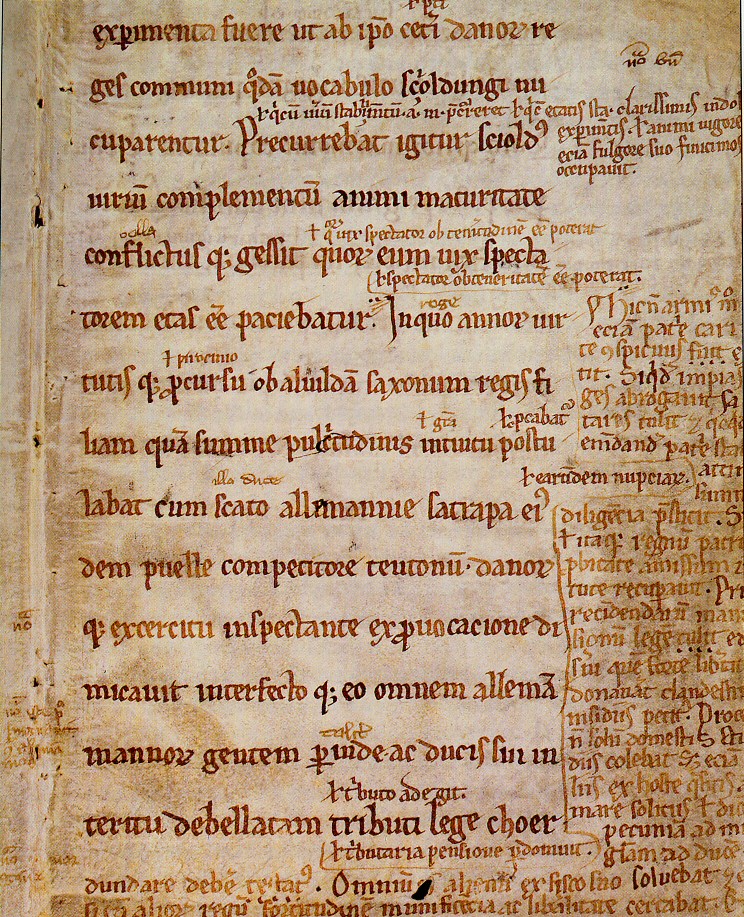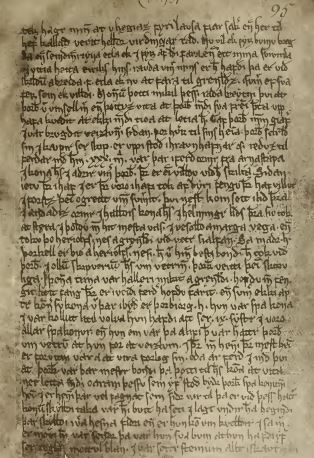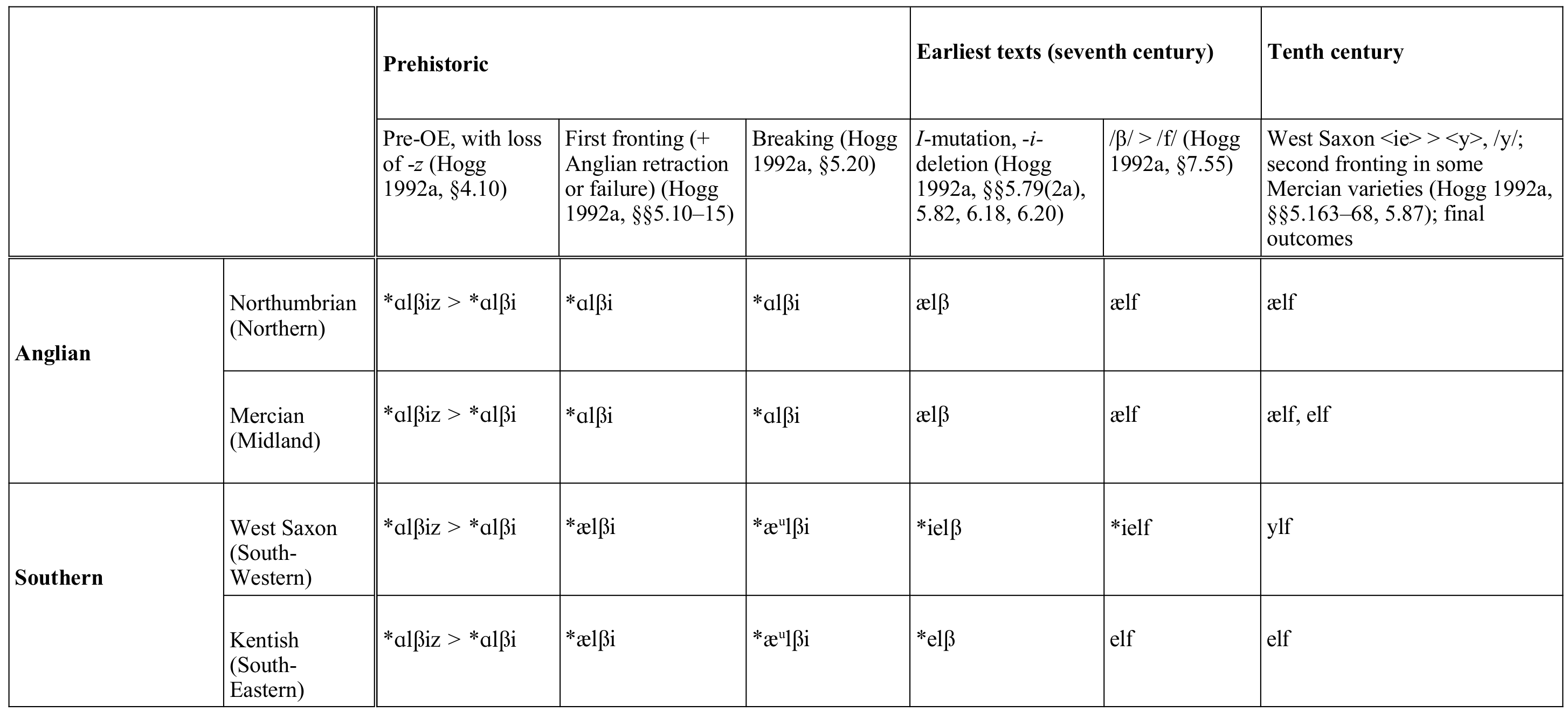|
Starkad
''Starkad'' ( or ; Latin: ''Starcaterus''; in the Late Middle Ages also ''Starkodder''; Danish language, modern Danish: ''StÊrkodder'')The article ''Starkad'' in ''Nationalencyklopedin''. was either an eight-armed giant or the human grandson of the aforementioned giant in Norse mythology. Starkad appears in numerous accounts, and the stories of his adventures relate to different Scandinavian traditions. He is most fully treated in ''Gesta Danorum'' but he also appears in Icelandic sources. He is portrayed as a great warrior who performed many heroic deeds but also many crimes. A cognate of the Starkad legends can be found in the Anglo-Saxon literature, Anglo-Saxon poem ''Beowulf''.Andersson, Ingvar. (1947). ''SkÄnes historia: till Saxo och SkÄnelagen''. Norstedts, Stockholm. p. 210. ''Beowulf'' In ''Beowulf'', the feud between the Daner, Danes and the Heaðobards was to be ended with the marriage of Ingeld, the son of the fallen Heaðobard king Froda, and Freawaru, the daugh ... [...More Info...] [...Related Items...] OR: [Wikipedia] [Google] [Baidu] |
Ingeld
Ingeld or Ingjaldr (Old Norse: ) was a legendary warrior who appears in early English and Norse legends. Ingeld was so well known that, in 797, Alcuin wrote a letter to Bishop Higbald of Lindisfarne questioning the monks' interest in heroic legends with: 'Quid enim Hinieldus cum Christo?' - What has Ingeld to do with Christ? The legends that survive tell of Ingeld as an enemy of HroĂ°gar, Halga and HroĂ°ulf. The conflict between the Scyldings HroĂ°gar and HroĂ°ulf on one side, and the HeaĂ°obards Froda and Ingeld on the other, appears both in ''Beowulf'' and in ''Widsith''. Scholars generally agree that these characters appear in both Anglo-Saxons, Anglo-Saxon (''Beowulf'') and Scandinavian tradition (Norse sagas and Danish chronicles). However, in the Norse tradition the HeaĂ°obards had apparently been forgotten and the conflict is instead rendered as a family feud, or as a conflict with the Saxons, where the Danes take the place of the HeaĂ°obards. Attestations ''Beowulf'' In ' ... [...More Info...] [...Related Items...] OR: [Wikipedia] [Google] [Baidu] |
Freawaru
Freawaru, introduced in l. 2020 of the poem ''Beowulf'', is the daughter of King HroĂ°gar and Queen WealhĂŸeow. Freawaru is a ''freoĂ°uwebbe'' or peace-weaver (an important concept in the poem) who is married to Ingeld, King of the HeaĂ°obards and son of Froda. This marriage was created as a means of ending a feud between the two kingdoms (due to the murder of Froda by the Danes). It was an unsuccessful attempt to end the feud. Starkad, An old warrior urged the HeaĂ°obards to revenge, and Beowulf (hero), Beowulf predicts to Hygelac that Ingeld will turn against his father-in-law HroĂ°gar.lines 2067-2069. In a version given in the Danish chronicle ''Gesta Danorum'' (see below), the old warrior appears as Starkad, and he succeeded in making Ingeld divorce his bride and in turning him against her family. Scandinavian sources In ''Gesta Danorum'' (book 6), Freawaru also appears, but unnamed. Froda and Ingeld are rendered as Danish kings, in conflict with the Saxon people, Saxons, and F ... [...More Info...] [...Related Items...] OR: [Wikipedia] [Google] [Baidu] |
Gesta Danorum
("Deeds of the Danes") is a patriotic work of Danish history, by the 12th-century author Saxo Grammaticus ("Saxo the Literate", literally "the Grammarian"). It is the most ambitious literary undertaking of medieval Denmark and is an essential source for the nation's early history. It is also one of the oldest known written documents about the history of Estonia and Latvia. Consisting of sixteen books written in Latin on the invitation of Archbishop Absalon, describes Danish history and to some degree Scandinavian history in general, from prehistory to the late 12th century. In addition, offers singular reflections on European affairs in the High Middle Ages from a unique Scandinavian perspective, supplementing what has been handed down by historians from Western and Southern Europe. Books The sixteen books, in prose with an occasional excursion into poetry, can be categorized into two parts: Books 1â9, which deal with Norse mythology and semi-legendary Danish histor ... [...More Info...] [...Related Items...] OR: [Wikipedia] [Google] [Baidu] |
DĂsablĂłt
The ''DĂsablĂłt'' was the ''blĂłt'' (sacrificial holiday) which was held in honour of the female spirits or deities called '' dĂsir'' (and the ValkyriesThe article ''Diser'' in ''Nationalencyklopedin'' (1991).), from pre-historic times until the Christianization of Scandinavia. Its purpose was to enhance the coming harvest."Disablot", ''Nationalencyklopedin''. It is mentioned in '' Hervarar saga'', ''VĂga-GlĂșms saga'', ''Egils saga'' and the ''Heimskringla''. The celebration still lives on in the form of an annual fair called the Disting in Uppsala, Sweden. The DĂsablĂłt appears to have been held during Winter Nights, or at the vernal equinox.The article ''Distingen'', in the encyclopedia ''Nationalencyklopedin''. In one version of ''Hervarar saga'', there is a description of how the sacrifice was performed. Alfhildr, the daughter of king Alfr of Alfheim, was kidnapped by Starkad Aludreng while she was reddening a horgr with blood. This suggests that the rite was perf ... [...More Info...] [...Related Items...] OR: [Wikipedia] [Google] [Baidu] |
Ăorsteins Saga VĂkingssonar
Ăorsteins saga VĂkingssonar or The Saga of Thorstein, Viking's Son is a legendary saga which takes place in the 7th century. It is about the father of Frithjof the Bold. It begins in Norway and Sweden (with locations such as UllerĂ„ker), but continues into exotic places such as India. It is not one of the more famous sagas, but it is still considered to be an entertaining story. It is a prequel to '' FriĂ°ĂŸjĂłfs saga ins frĆkna'', ''The Saga of Fridthjof the Bold''. It has been compared to the runestone Sö 54 in Bjudby, Södermanland, Sweden, as it also mentions a prominent family, and besides the father ''VĂkingr'' it names three sons with the same names as in the saga, and there are also close correspondences with the other names. Plot In Sweden, Viking sires nine sons by a second wife. Thorsten (Thorstein, or Thor's Stone) is the oldest son of Viking. Viking befriends his worthy foe Njorfe, King of Upplands, in Norway, who also has nine sons. The two groups of sons are ... [...More Info...] [...Related Items...] OR: [Wikipedia] [Google] [Baidu] |
ĂlivĂĄgar
In Norse mythology, ĂlivĂĄgar (Old Norse: ; "Ice Waves") are rivers that existed in Ginnungagap at the beginning of the world. The ''Prose Edda'' relates: The streams called Ice-waves, those which were so long come from the fountain-heads that the yeasty atter upon them had hardened like the slag that runs out of the fire,-these then became ice; and when the ice halted and ceased to run, then it froze over above. But the drizzling rain that rose from the venom congealed to rime, and the rime increased, frost over frost, each over the other, even into Ginnungagap, the Yawning Void. ''Gylfaginning'' 5. The eleven rivers traditionally associated with the ĂlivĂĄgar include the Svöl, GunnĂŸrĂĄ, Fjörm, FimbulĂŸul, SlĂĂ°r, HrĂĂ°, Sylgr, Ylgr, ViĂ°, Leiptr and Gjöll (which flows closest to the gate of Hel and is spanned by the bridge GjallarbrĂș), although many other additional rivers are mentioned by name in both Eddas. The rivers seem to act as borders between differing ... [...More Info...] [...Related Items...] OR: [Wikipedia] [Google] [Baidu] |
HauksbĂłk
HauksbĂłk (; 'Book of Haukr') is a 14th-century Icelandic manuscript created by Haukr Erlendsson. Significant portions of it are lost, but it contains the earliest copies of many of the texts it contains, including the '' Saga of Eric the Red''. In most cases, Haukr copied from earlier, now lost manuscripts. Among these are the section on mathematics called '' Algorismus'', the text of '' Hervarar saga ok HeiĂ°reks''. It was originally in one part, but now split in three (AM 371 4to, AM 544 4to and AM 675 4to) and held at the Ărni MagnĂșsson Institute for Icelandic Studies in ReykjavĂk ReykjavĂk is the Capital city, capital and largest city in Iceland. It is located in southwestern Iceland on the southern shore of FaxaflĂłi, the FaxaflĂłi Bay. With a latitude of 64°08âČ N, the city is List of northernmost items, the worl ..., Iceland. Composition HauksbĂłk is associated with an Icelandic lawspeaker named Haukr Erlendsson: although the work of several scribes, the va ... [...More Info...] [...Related Items...] OR: [Wikipedia] [Google] [Baidu] |
Jötunn
A (also jotun; plural ; in the normalised scholarly spelling of Old Norse, ; or, in Old English, , plural ) is a type of being in Germanic mythology. In Norse mythology, are often contrasted with gods (the Ăsir and Vanir) and with other non-human figures, such as dwarf (mythology), dwarfs and elf, elves, although the groupings are not always mutually exclusive. The entities included in the category are referred to by several other terms, including , (or ) and if male and or if female. The typically dwell across boundaries from the gods and humans in lands such as . The are frequently attested throughout the Old Norse records, with also featuring in the Old English epic poem ''Beowulf''. The usage of the terms is dynamic, with an overall trend that the beings become portrayed as less impressive and more negative as Christianity becomes more influential over time. Although the term "giant" is sometimes used to gloss the word "" and its apparent synonyms in some transl ... [...More Info...] [...Related Items...] OR: [Wikipedia] [Google] [Baidu] |
Ălfheimr (region)
Alfheim (, "elf home" or "land between the rivers") is an ancient name for an area corresponding to the modern Swedish province of BohuslĂ€n. About the region and its folk The Ynglinga saga, when relating the events of the reign of King GudrĂžd the Hunter, Gudröd (''GuĂ°röðr'') the Hunter relates: Ălfheim, at that time, was the name of the land between the ''Raumelfr'' ['Raum river', lower parts of the modern Glomma river] and the ''Gautelfr'' ['Gaut river', the modern Göta Ă€lv]. The words "at that time" indicates the name for the region was archaic or obsolete by the 13th century. The element ''elfr'' is a common word for 'river' and appears in other river names. It is cognate with Middle Low German ''elve'' 'river' and the name of the river Elbe. The Raum Elf marked the border of the region of RaumarĂki and the Gaut Elf marked the border of Gautland (modern Götaland). It corresponds closely to the former Norway, Norwegian province of BohuslĂ€n, now in Sweden. The nam ... [...More Info...] [...Related Items...] OR: [Wikipedia] [Google] [Baidu] |
Holmgang
Holmgang (, , Danish language, Danish and , ) is a duel practiced by early medieval Scandinavians. It was a legally recognized way to settle disputes. The name ''holmgang'' (literally "holm-going") may derive from the combatants' dueling on a small island, or ''holm (island), holm'', as they do in the saga of Egill SkallagrĂmsson, alternatively figuratively in reference to an arena. At least in theory, anyone offended could challenge the other party to holmgang regardless of their differences in social status. This could be a matter of honor, ownership or property, demand of restitution or debt, legal disagreement or intention to help a wife or relative or avenge a friend. Holmgangs were fought 3â7 days after the challenge. If the person challenged did not turn up for the holmgang, the other man was considered just in his challenge. If the offended party did not turn up for the holmgang, they were deemed niĂ°ingr, and could have been sentenced to outlawry. In effect, if someo ... [...More Info...] [...Related Items...] OR: [Wikipedia] [Google] [Baidu] |
Ălfr
An elf (: elves) is a type of humanoid supernatural being in Germanic folklore. Elves appear especially in North Germanic mythology, being mentioned in the Icelandic ''Poetic Edda'' and the ''Prose Edda''. In medieval Germanic-speaking cultures, elves were thought of as beings with magical powers and supernatural beauty, ambivalent towards everyday people and capable of either helping or hindering them. Beliefs varied considerably over time and space and flourished in both pre-Christian and Christian cultures. The word ''elf'' is found throughout the Germanic languages. It seems originally to have meant 'white being'. However, reconstructing the early concept depends largely on texts written by Christians, in Old and Middle English, medieval German, and Old Norse. These associate elves variously with the gods of Norse mythology, with causing illness, with magic, and with beauty and seduction. After the medieval period, the word ''elf'' became less common throughout the ... [...More Info...] [...Related Items...] OR: [Wikipedia] [Google] [Baidu] |





